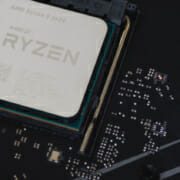Mobile App Upgrade: 5 Signs That Your App Needs Improvements
A mobile app upgrade may either excite or scare you. It may excite you if you’re eager to introduce new features and enhancements. And scare you if you’re anticipating many issues and roadblocks when upgrading your app.
Now, unless you’re not planning on sunsetting your app, it’s best to forego the fear and forge ahead with the upgrade process. And that’s because you want to keep your app relevant to retain existing users and attract new users.
1. A New Design Requires A Mobile App Upgrade
If you haven’t updated your mobile app in a while, it probably has an outdated user interface (UI). And that’s no good, as users may equate an outdated UI with a low-quality app. Furthermore, users accustomed to modern design conventions may have difficulty navigating your app in its current state.
So you must have a proficient designer on your team or work with an established studio such as NS804 to refresh your app’s design. And then create an easy-to-navigate and modern UI that even non-tech savvy users can comprehend at a glance.
2. Performance Issues
Most users won’t put up with a poor-performing app and will eventually uninstall it from their devices if performance issues persist. But how do you determine if your app’s performing poorly?
Firstly, you should be asking users for feedback and collecting and diagnosing your app’s crash logs. And secondly, you should be looking out for the following issues: app runs slower than intended, audio and screen glitches, device overheats when the app runs, memory leaks, ongoing crashes, and storage errors, to name a few.
3. The Codebase Is Outdated And Difficult To Maintain
You should move ahead with a mobile app upgrade if you have an outdated codebase. And the reason for this is that it’s a maintenance nightmare to keep code that’s old. Moreover, you may have difficulty scaling your app and introducing new features with an older codebase.
And then, you should also consider migrating to more modern programming languages. For example, an Android app programmed in Java can become more readable and quicker to type if rewritten in Kotlin, a modern counterpart of Java. The same applies to an iOS app if you plan to migrate from Objective-C to Swift.
4. Support For Additional Platforms And Devices
Perhaps your mobile app only supports Android smartphones and tablets. But recently, some users have requested that you target Android TVs and even the latest generation of flip phones. Furthermore, iOS users have heard of your app and have requested a port for their platform. Under such circumstances, it’s a good idea to move ahead with a mobile app upgrade that properly utilizes this wide range of form factors and screen sizes.
5. Introduce New Features And Tighten Up Security
Every OS update of Android and iOS presents yet another opportunity to move ahead with a mobile app upgrade. And that’s because newer versions of Android and iOS boast new features and enhanced security. So, users will often upgrade to these versions, especially when they purchase newer devices.
Furthermore, users will expect your app to take advantage of the latest OS features and enhancements. And you’d definitely want to do that, especially if you have a premium or paid app and a user base that quickly migrates to the latest OS.
In Conclusion
It may be time to forge ahead with that all-important mobile app upgrade if you’ve noticed any of the five signs mentioned earlier. Contact NS804 to learn how we’ll help you handle this challenging but incredibly rewarding part of a mobile app’s lifecycle.












 https://unsplash.com/photos/HpPmiduLDC0
https://unsplash.com/photos/HpPmiduLDC0
Leave a Reply
Want to join the discussion?Feel free to contribute!